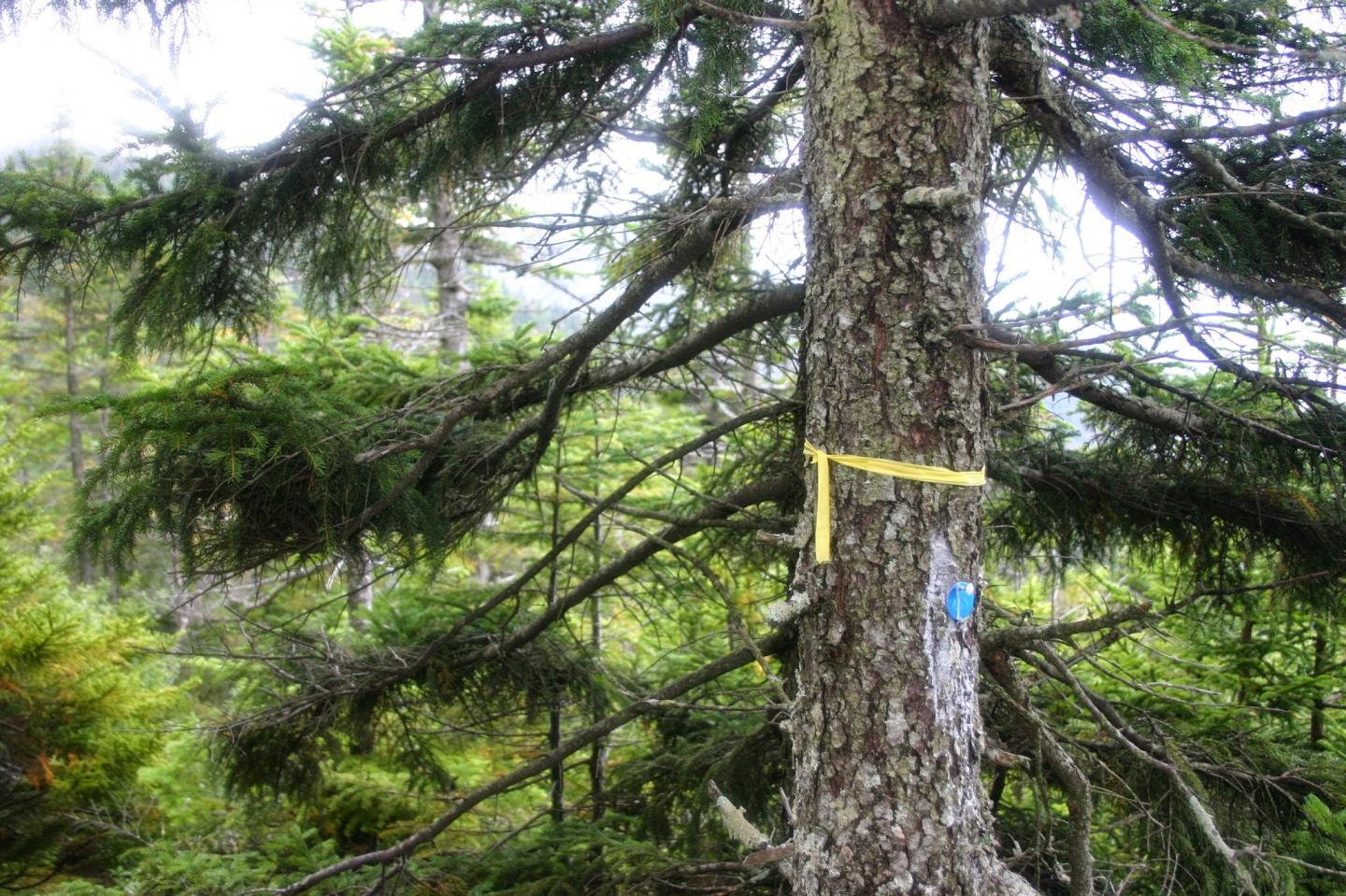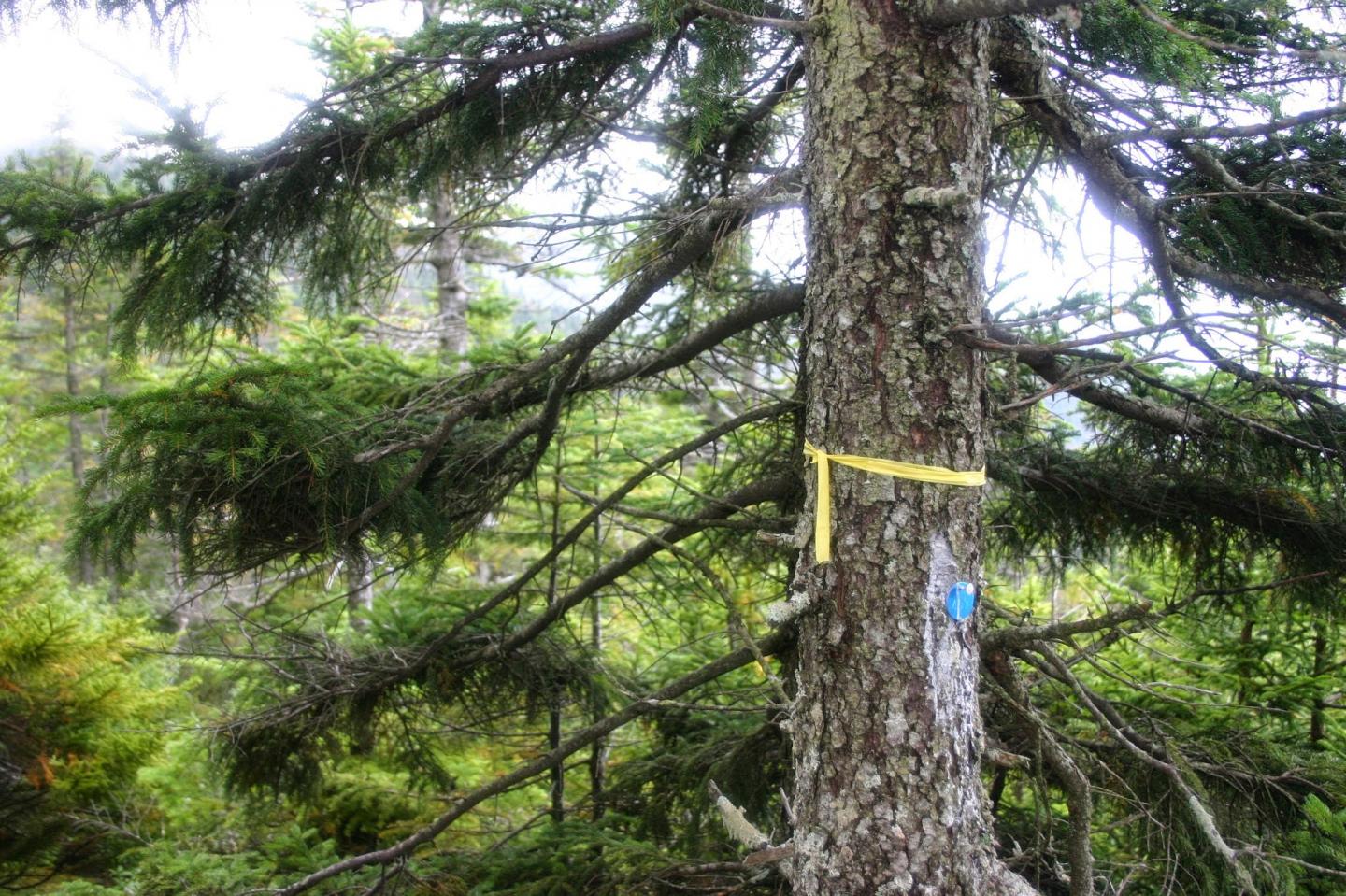
Credit: Alexandra Kosiba, University of Vermont
BURLINGTON, Vt., (June 5, 2018) – Red spruce, for decades the forest equivalent of the canary in the coal mine signaling the detrimental effects of acid rain on northeastern forests, is making a comeback. New research by a team of scientists from the USDA Forest Service and the University of Vermont suggests that a combination of reduced pollution mandated by the 1990 Amendments to the Clean Air Act and changing climate are behind the resurgence.
The study, "The surprising recovery of red spruce growth shows links to decreased acid deposition and elevated temperature" by lead author Alexandra Kosiba of the University of Vermont with co-authors Paul Schaberg of the USDA Forest Service's Northern Research Station and University of Vermont researchers, was published this week in the journal Science of the Total Environment. The study is available at: https://www.nrs.fs.fed.us/pubs/56217
The research team assessed the relationship between red spruce growth and factors that may influence growth such as tree age and diameter, stand dynamics, plot characteristics (elevation, slope, aspect, geographical position), and environmental variables including temperature, precipitation, a suite of climate indices, and sulfur and nitrogen pollution deposition that cause acid deposition. In a study that encompassed 658 trees in 52 plots spanning five states, they found that more than 75 percent of red spruce trees and 90 percent of the plots examined in the study exhibited increasing growth since 2001.
"Our research suggests that the reductions we've seen in acid rain are making a difference to forests in the Northeast," said Schaberg. "Acid rain decline has helped red spruce recover, as well as higher temperatures in the fall, winter, and spring. Higher temperatures help some species and hurt others – right now, red spruce are benefiting, but they could be vulnerable to change in the future."
Red spruce have unique characteristics that make them particularly susceptible to acid rain. For example, they have little genetic variation and they have only moderate tolerance to the cold. But they are also able to "wake up" and photosynthesize during warm interludes of the dormant season, a characteristic that may better position the species to take advantage of recent climate shifts that extend the functional growing season. Yet the study notes that future changes in habitat suitability may not be as favorable to red spruce as those already experienced – it will likely depend on how extreme future changes are.
Scientists are confident that their research represents the state of red spruce in the entire region, according to Kosiba. "Our study included a broad range of tree ages and sizes as well as a variety of plot locations and characteristics," she said. "We are confident that we are capturing the regional status of red spruce forests, not just a snapshot of a specific location."
"More broadly our work demonstrates the importance of using research to identify ecosystem problems that inform policy to mitigate those issues, and result in biological recovery," noted Kosiba.
###
Co-authors included Shelly Rayback and Gary Hawley of the University of Vermont.
The mission of the Northern Research Station is to improve people's lives and help sustain the natural resources in the Northeast and Midwest through leading-edge science and effective information delivery.
The mission of the U.S. Forest Service, an agency of the U.S. Department of Agriculture, is to sustain the health, diversity and productivity of the nation's forests and grasslands to meet the needs of present and future generations. The agency manages 193 million acres of public land, provides assistance to state and private landowners, and maintains world-renowned forestry research and wildland fire management organizations. National forests and grasslands contribute more than $30 billion to the American economy annually and support nearly 360,000 jobs. These lands also provide 30 percent of the nation's surface drinking water to cities and rural communities; approximately 60 million Americans rely on drinking water that originated from the National Forest System.
USDA is an equal opportunity provider and employer. To file a complaint of discrimination, write to USDA, Assistant Secretary for Civil Rights, Office of the Assistant Secretary for Civil Rights, 1400 Independence Avenue, S.W., Stop 9410, Washington, DC 20250-9410, or call toll-free at (866) 632-9992 (English) or (800) 877-8339 (TDD) or (866) 377-8642 (English Federal-relay) or (800) 845-6136 (Spanish Federal-relay).
Media Contact
Jane Hodgins
[email protected]
651-304-7607
http://nrs.fs.fed.us
Original Source
https://www.nrs.fs.fed.us/news/release/red-spruce-resurgence http://dx.doi.org/10.1016/j.scitotenv.2018.05.010





